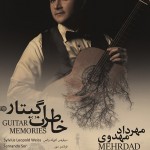Transition to Enlightenment: Six Lectures on Mozart’s String Quartets*
Basic Ideas and General Structure
The Enlightenment, an epoch of intellectual fervor marked by reason, individualism, and cultural evolution, indelibly left its imprint on the arts. Mozart, a luminary of this transformative era, intricately wove these ideals into his compositions, particularly his string quartets. This article aims to unravel the multifaceted dialogue between Mozart’s musical language and the philosophical tenets of the Enlightenment, delving into the quartets’ structural intricacies, emotional depth, and universality.
When we explore this relationship in more detail musical elements are reflecting five general enlightenment ideas.
Equality of Musical Lines
An additional layer of Enlightenment ideals can be found in Mozart’s string quartets through the equality of musical lines. The quartet format, with its four instruments engaged in intricate dialogues, reflects a democratic interplay where each voice contributes to the overall musical conversation. This equality among the instruments mirrors the Enlightenment’s emphasis on equality among individuals, resonating with the democratic principles that were gaining prominence in the societal and political spheres of Mozart’s time.
In the string quartets, Mozart masterfully distributes musical motifs and themes among the four instruments, creating a harmonious collaboration where no voice dominates over the others. This egalitarian distribution of musical expression exemplifies the Enlightenment’s vision of a society where diverse voices coexist and contribute to a greater whole. Mozart’s ability to weave these musical lines together showcases not only his technical skill but also his commitment to the idea that every voice, like every individual, has a valuable role to play in the collective pursuit of artistic and intellectual excellence.
As the intertwining melodies and harmonies unfold in Mozart’s quartets, they become a metaphor for the Enlightenment’s call for equality, fostering a musical environment where each instrument, like each individual in society, is given an opportunity to shine and contribute to the overall richness of the composition. This aspect further solidifies Mozart’s string quartets as not only musical masterpieces but also profound expressions of the Enlightenment’s democratic aspirations.
Clarity of Formal Structure
The Enlightenment’s emphasis on reason, order, and intellectual clarity finds a resonant counterpart in the formal structure of Mozart’s string quartets. Mozart, a true child of the Enlightenment, carefully crafted his compositions with a meticulous attention to formal organization, echoing the era’s commitment to rationality and structure.
In examining the quartets, one is immediately struck by their clear and transparent formal architectures. Movements follow established classical forms such as sonata-allegro, minuet, and trio, adhering to a structured framework that aligns with Enlightenment ideals of order and reason. This deliberate organization is not merely a stylistic choice; it reflects Mozart’s belief in the power of a well-ordered society, mirroring the Enlightenment’s philosophical underpinnings.
The Enlightenment sought to dispel ignorance and promote understanding through reason and knowledge. Similarly, Mozart’s commitment to formal clarity in the string quartets serves as a musical manifestation of the Enlightenment’s aspiration for intellectual illumination. The balanced phrases and logical progression of themes within the quartets embody the Enlightenment’s call for a rational and comprehensible world.
Furthermore, the clarity of formal structure in Mozart’s quartets contributes to the accessibility of his music. In aligning with Enlightenment ideals of making knowledge and art accessible to a broader audience, Mozart created compositions that invite listeners into a world of order and intelligibility. The transparent structure allows audiences of varying backgrounds to engage with and appreciate the complexity of the music, reflecting the Enlightenment’s democratic spirit.
In essence, Mozart’s meticulous attention to the formal architecture of his string quartets serves as a harmonious echo of Enlightenment principles. Through the clarity of musical structure, Mozart not only showcases his technical prowess but also contributes to the Enlightenment’s broader project of promoting reason, understanding, and a more ordered society.
Emotional Depth and Expression
While the Enlightenment placed a central emphasis on reason and intellectual clarity, it also recognized the importance of human emotions, and Mozart’s string quartets serve as profound expressions of this dualism. The emotional depth and expressive range found in these compositions reveal Mozart’s ability to seamlessly weave together the rational and the emotional, aligning with Enlightenment ideals that embraced both aspects of the human experience.
In Mozart’s string quartets, the emotional spectrum is vast, ranging from moments of exuberant joy to introspective melancholy. This emotional richness mirrors the Enlightenment’s acknowledgment that the human experience is multifaceted and includes a complex interplay of reason and sentiment. Mozart, as a composer deeply influenced by Enlightenment philosophy, understood the significance of conveying genuine human emotions through his music.
The string quartets become a canvas for Mozart to explore and express the full range of human sentiment. The joyful passages resonate with the Enlightenment’s celebration of human happiness and individual fulfillment, while the more introspective moments echo the movement’s recognition of the depths of human introspection and contemplation.
In connecting emotional depth to Enlightenment ideals, Mozart’s quartets convey a message that transcends mere musical notes. They affirm that the pursuit of reason and intellectual clarity need not be divorced from the richness of human emotions. Instead, the two can coexist harmoniously, enriching each other to create a more comprehensive understanding of the human condition—an understanding that aligns with the Enlightenment’s vision of a balanced and enlightened society.
In summary, Mozart’s incorporation of emotional depth and expression in his string quartets serves as a testament to the Enlightenment’s holistic approach to human experience, embracing both reason and emotion as integral components of a fulfilled and enlightened life.








